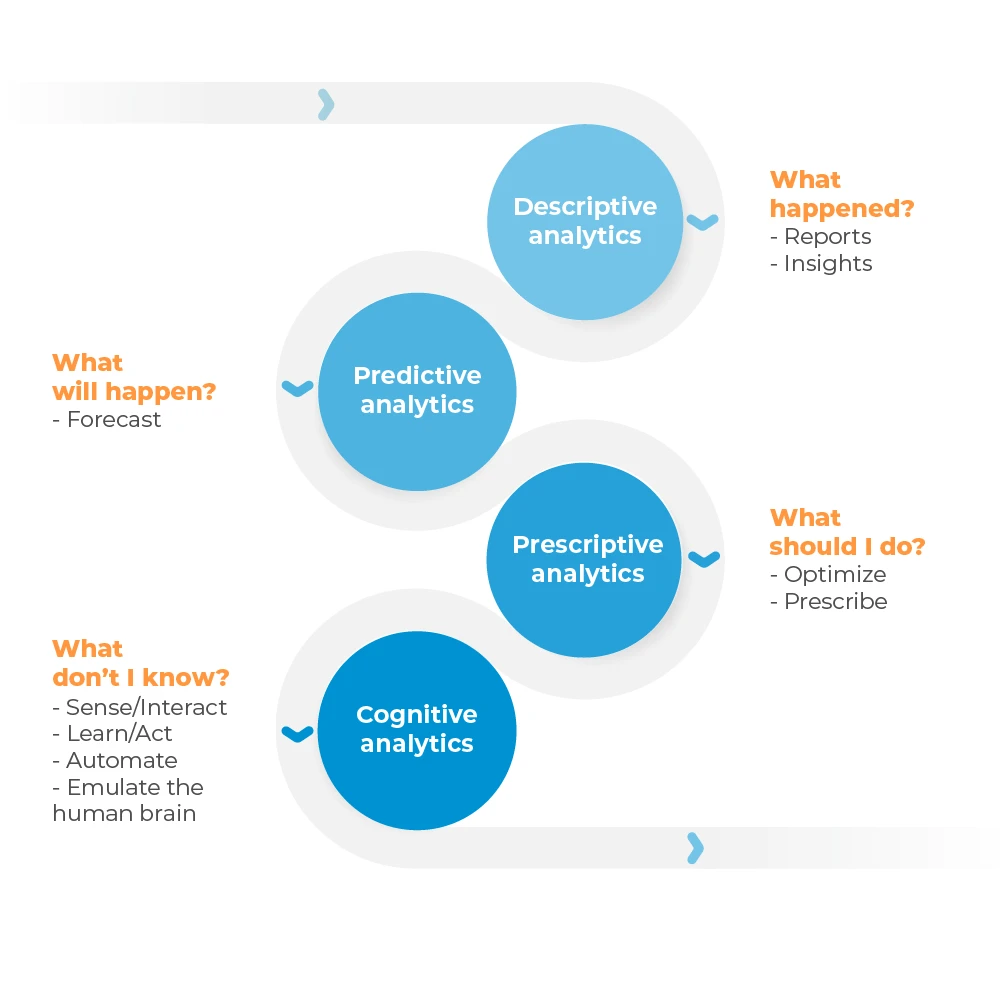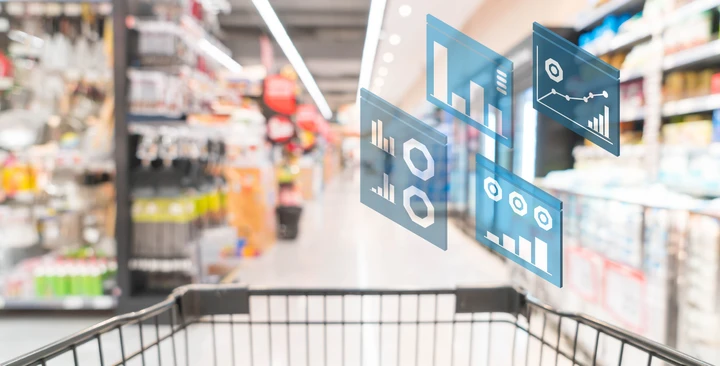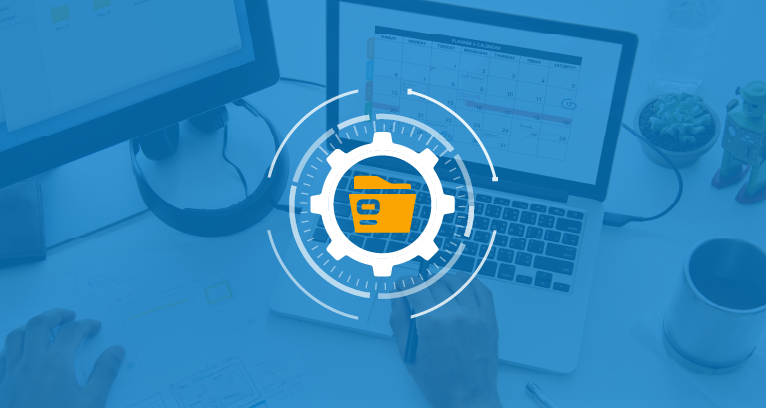Over the last decade, we have seen Data Analytics evolve at a tremendously fast pace. With the introduction of Big Data, the Cloud, Data Warehouses, and Artificial Intelligence, Data Analytics had to move with the times…fast.
Despite analytics playing a key role in technology, many are unable to define and understand the value it has. (To be fair, it is a loaded term). At Cognira, we understand analytics as combining business knowledge, with mathematical elegance, and data-driven insights. By doing so, we take the ‘human bias’ out of the equation, providing a clearer and more accurate prediction. That definition, however, is just scratching the surface.
Throughout the blog, learn about the analytics evolution over time, and how it relates to retailers.
A sneak peek into the analytics evolution

Phase 1: Descriptive analytics
This form of analytics uses business intelligence, a data warehouse that allows us to put all data together in one place, with a user interface component on top.
Perhaps the most important benefit of descriptive analytics is being able to slice and dice the information in many different ways to understand what happened in the past.
Retail Example: An apparel retailer would like to know if this year’s spring pre-season sales campaign resulted in higher sales than previous spring promotion campaigns. Descriptive analytics would be used to analyze the response from the previous season’s promotion campaigns and determine if there is a statistical difference with this year’s results.
Phase 2: Predictive analytics
Now that we have the opportunity to know what happened in the past, can we predict the future? This is where predictive analytics comes into play.
Predictive analytics uses a variety of statistical techniques that examines past and current data to make predictions about the future. This insight can inform decisions that ultimately reduce costs and increase profits.
Retail Example: The apparel retailer would now like to plan for next spring’s pre-season promotion. Predictive analytics would be leveraged to model the response of the previous promotion campaigns and provide an understanding of the main drivers of that response. With this understanding, the retailer can now predict the most likely response from next spring’s campaign, given that any decisions they make affect the main drivers of response.
Phase 3: Prescriptive analytics
This form of analytics takes data one step further, aiming to optimize and prescribe a course of action for what you should be doing.
Though prescriptive analytics helps identify the best set of decisions that will help result in optimizing a business objective. To be effective, the individual leveraging prescriptive analysis must possess extensive domain knowledge of the business. This means understanding the terminology, processes, and language to truly understand what needs to be done and the business limitations relevant to their decisions. With a clear understanding of the necessary business decisions, realistic constraints, and overall objectives, prescriptive analytics can provide a viable path to a solution.
Retail Example: The apparel retailer is in the process of planning for next spring’s pre-season promotion. There are a number of key business decisions that need to be made, along with identifying business constraints, and determining the business objectives of the campaign. Prescriptive analytics leverages the results of the predictive analytics and then overlays an optimization framework to account for all of the effects just mentioned. The result is a data and business-informed solution for the key decisions necessary for the campaign to meet the business objective.
Phase 4: Cognitive analytics
The previous phases of the analytics evolution allowed us to understand what happened in the past, what will happen in the future, and prescribe the best course of action in a given scenario. But what about a system that utilizes an algorithm to learn from past decisions and adapt accordingly?
This concept is quickly becoming a reality with Cognitive Analytics. Though we are only in the early stages, Cognitive Analytics is all about sense, interaction, learning, acting, automating, and emulating the human brain. Think self-driving cars. Think Alexa and Siri. Think Cognira! (Our name quite literally means cognitive retail analytics).
It is important to note, that the more we move to Cognitive Analytics, the more we need Artificial Intelligence (AI) and Machine Learning (ML) to automate our processes!
Retail Example: The apparel retailer now wants to establish a system that learns from previous campaigns and responds to the ever-changing market conditions in the apparel industry. Cognitive analytics provides a framework to actively learn from past campaigns and gives guidance on business decisions needed to formulate the predictive analytics optimization. With the power of AI, many of the decisions a retailer would typically make are automated by the learning system, which is not only more accurate but allows the retailer to have an edge over the competition.
So, how does cognitive analytics impact retailers?
However, it is important to understand that if retailers don’t have analytics already embedded, it would be impossible to onboard cognitive analytics. Retailers should first invest in the building blocks, which means gathering all the data and putting it in one place, having a data lake or data repository, and continuing to invest in new technologies. This shifts a ‘gut feeling’ approach to a data approach which takes time and effort.
It’s important to note, that while we support a data approach, the ‘gut feeling’ (what we call art in retail), will always be there! Gut feeling has shown a direct positive impact in retail with trends, taste, etc, further strengthening cognitive analytics.
Cognitive and beyond
The best way to invest in the opportunities the analytics evolution has to offer is to embrace technology and start with the simple building blocks of analytics.

